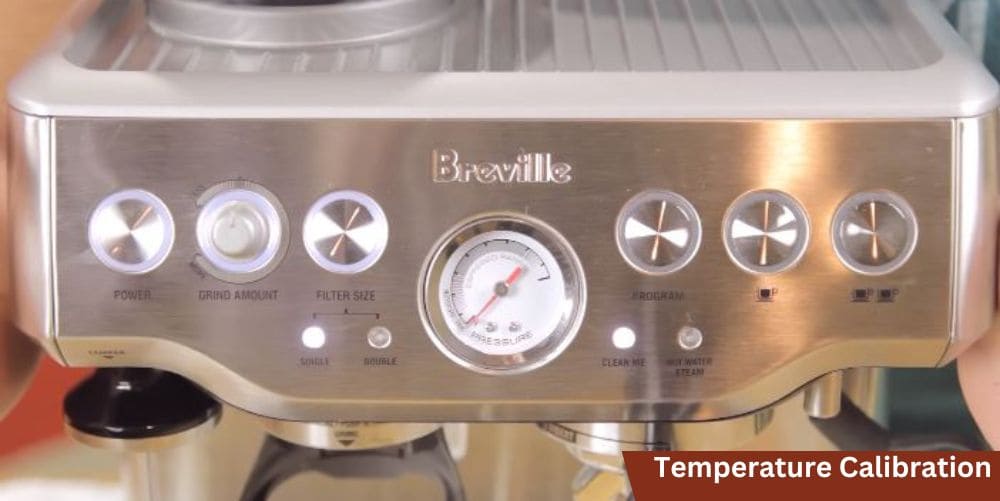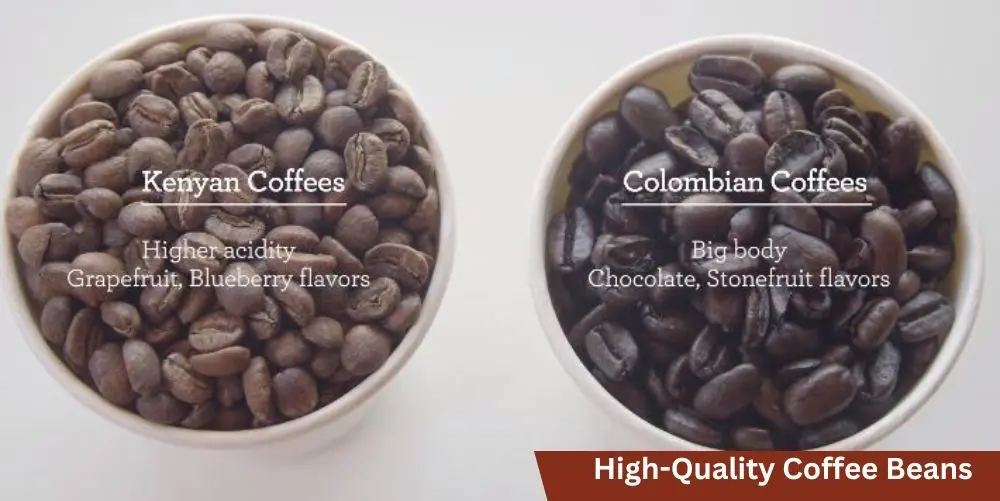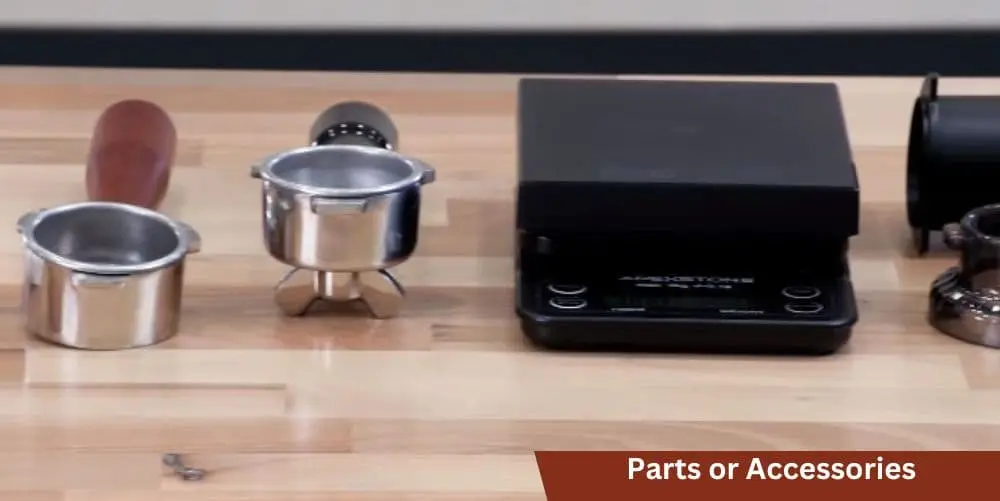Breville Barista Express Burnt Taste [How to Fix]

Are you tired of sipping on coffee that tastes burnt and bitter? If you’re experiencing a burnt taste in your coffee brewed with the Breville Barista Express, you’re not alone. Don’t worry; we’re here to help! In this comprehensive troubleshooting guide, we’ll explore the common causes of that undesirable burnt flavor and provide you with practical solutions to fix it.
A perfect cup of coffee should delight your senses, with its rich aroma and smooth, well-balanced flavors. However, when your brew has a burnt taste, it can be a disappointing and frustrating experience. But fear not! By understanding the factors that contribute to this issue and making some adjustments, you can once again enjoy a delicious cup of coffee from your Barista Express machine.
In the following sections, we’ll delve into the various elements that can lead to a burnt taste and equip you with the knowledge and techniques to rectify the problem. We’ll cover everything from evaluating and adjusting grind size to calibrating temperature settings, mastering extraction time, selecting high-quality coffee beans, and ensuring proper cleaning and maintenance.
It’s important to note that troubleshooting your Breville Barista Express is a journey of exploration and experimentation. By following the steps outlined in this guide, you’ll gain valuable insights into the art of coffee brewing and develop the skills to create consistently delightful cups of coffee.
Understanding the Burnt Taste

Have you ever taken a sip of your coffee, only to be greeted with an unpleasant burnt flavor? Understanding the causes of a burnt taste is crucial to troubleshooting and fixing the issue with your Breville Barista Express. Let’s explore the common culprits behind this undesirable taste and equip ourselves with the knowledge to overcome it.
Improper Grind Size:
The grind size of your coffee beans plays a significant role in the extraction process. If your coffee tastes burnt, it could be a sign that the grind size is too fine. Fine grounds increase the surface area of the coffee particles, leading to over-extraction and a burnt taste. Experiment with adjusting the grind size to achieve a more balanced extraction.
Incorrect Brewing Temperature:
The temperature at which you brew your coffee can greatly impact its taste. If your Barista Express is brewing at excessively high temperatures, it can result in burnt flavors. Conversely, brewing at too low a temperature may lead to under-extraction. Check the brewing temperature settings on your machine and ensure they are calibrated correctly for optimal flavor extraction.
Over-Extraction:
Over-extraction occurs when water comes into contact with the coffee grounds for an extended period or when the water flows through the grounds too slowly. This can happen if you’re using too fine a grind or if the extraction time is too long. Over-extraction extracts more bitter compounds from the coffee, resulting in that burnt taste. Pay attention to the brewing time and adjust it to achieve a balanced extraction.
Stale or Low-Quality Coffee Beans:
The quality and freshness of your coffee beans have a significant impact on the taste of your brew. Stale or low-quality beans can contribute to a burnt taste. Ensure you’re using fresh, high-quality beans that have been properly stored. Consider purchasing whole beans and grinding them just before brewing to maximize freshness.
Improper Cleaning and Maintenance:
A buildup of coffee residue and oils in your machine can contribute to off-flavors, including a burnt taste. Regularly clean and maintain your Barista Express, following the manufacturer’s instructions. Pay particular attention to the cleaning of the grinder, group head, and portafilter to prevent any residual flavors from affecting your brew.
Evaluating and Adjusting Grind Size
One of the key factors that can contribute to a burnt taste in your coffee is the grind size of your coffee beans. The grind size affects the rate of extraction and can greatly impact the overall flavor profile of your brew. Let’s dive into evaluating and adjusting the grind size on your Breville Barista Express to achieve a more balanced extraction and eliminate that burnt taste.
Importance of Grind Size in Coffee Extraction:
Grind size is crucial because it determines how quickly water can extract flavors from the coffee grounds. A finer grind exposes more surface area of the coffee particles to the water, resulting in a faster extraction. On the other hand, a coarser grind slows down the extraction process. Finding the right balance is key to achieving optimal flavor.
Determining the Appropriate Grind Size for the Barista Express:
The ideal grind size can vary depending on factors such as coffee bean origin, roast level, and personal taste preferences. Start with a baseline grind size recommended by Breville for espresso brewing and adjust from there. Remember, a too-fine grind can lead to over-extraction and a burnt taste, while a too-coarse grind may result in under-extraction and weak flavors.
Step-by-Step Instructions for Adjusting the Grinder Settings:
- Ensure that your Barista Express is powered off and the bean hopper is empty.
- Remove the bean hopper and locate the grind size adjustment dial.
- Turn the dial to adjust the grind size. Typically, turning it toward “fine” will result in a finer grind, while turning it towards “coarse” will produce a coarser grind.
- Start with small adjustments, typically one notch at a time, and make note of the changes in taste and extraction.
- Test the new grind size by brewing a shot of espresso and tasting the results.
- Repeat the process, fine-tuning the grind size until you achieve a balanced extraction without any burnt flavors.
Tips for Achieving the Ideal Grind Consistency:
- Invest in a high-quality burr grinder if you haven’t already. Burr grinders offer more consistent and precise grind sizes compared to blade grinders.
- Regularly clean your grinder to remove any coffee residue affecting the grind consistency.
- Consider using a grinder with adjustable grind settings that allow for more precise control over the grind size.
- Experiment with grind sizes while keeping all other variables constant to better understand the impact on flavor.
Temperature Calibration and Control

The brewing temperature plays a vital role in extracting the flavors from your coffee beans. If your Breville Barista Express is brewing at incorrect temperatures, it can result in a burnt taste or under-extracted flavors. In this section, we’ll explore the importance of temperature control and guide you through the process of calibrating and maintaining the optimal brewing temperature.
Role of Temperature in Coffee Extraction:
The brewing temperature affects the solubility of compounds in coffee beans. Brewing at too high a temperature can over-extract bitter compounds while brewing at too low a temperature can result in a lackluster, under-extracted brew. Achieving the optimal temperature ensures a balanced extraction and enhances the flavors in your cup.
Checking the Brewing Temperature on the Barista Express:
- Power on your Barista Express and allow it to warm up for at least 15 minutes.
- Fill the portafilter with coffee grounds as you would for a regular brewing session.
- Start the extraction process without using the coffee grounds, allowing only hot water to flow through.
- Use a digital thermometer to measure the water temperature as it exits the group head.
- Repeat this process multiple times to ensure consistency and accuracy.
Calibrating the Temperature Settings:
- If you find that the temperature readings are consistently too high or too low, it may be necessary to calibrate the temperature settings on your machine.
- Refer to the user manual or Breville’s support resources for specific instructions on how to calibrate the brewing temperature on your Barista Express model.
Maintaining Consistent Temperature during Brewing:
- Preheat your espresso cups by rinsing them with hot water from the Barista Express.
- Warm up the portafilter by leaving it attached to the machine for a few minutes before dosing your coffee grounds.
- Ensure that the machine is properly warmed up before starting the extraction process.
- Monitor the temperature throughout the brewing process using the built-in thermometer or an external digital thermometer.
- Pay attention to any fluctuations in temperature and adjust your brewing technique accordingly.
Best Practices for Temperature Control:
- Experiment with different temperature settings to find the sweet spot for your preferred flavor profile.
- Consider using a temperature-stable espresso machine or implementing additional temperature management tools, such as a temperature-regulating portafilter or PID controller.
- Regularly clean the group head, ensuring that no mineral deposits or coffee residue are affecting the temperature stability.
Mastering Extraction Time
The duration of the extraction process significantly impacts the flavors and balance of your coffee. If your extraction time is too short or too long, it can lead to under-extracted or over-extracted flavors, including a burnt taste. In this section, we’ll dive into the importance of extraction time and provide you with tips and techniques to master it for a well-balanced cup of coffee.
Understanding Extraction Time and Its Impact on Flavor:
Extraction time refers to the duration during which water comes into contact with the coffee grounds. It influences the rate at which flavors are extracted from the coffee. If the extraction time is too short, the flavors may be underdeveloped, resulting in a weak and sour cup. Conversely, an extraction that is too long can lead to over-extraction, extracting undesirable bitter compounds and resulting in a burnt taste.
Identifying Signs of Over-Extraction:
Bitter taste: If your coffee tastes excessively bitter and harsh, it may be a sign of over-extraction.
Dark and murky appearance: Over-extracted coffee often has a darker and muddier appearance due to the extraction of unwanted compounds.
Dry mouthfeel: Over-extracted coffee can leave your mouth feeling dry and parched.
Adjusting Extraction Time Using the Barista Express’s Features:
Grind size: Experiment with adjusting the grind size. Finer grounds generally increase extraction speed, while coarser grounds slow it down.
Dose amount: Modifying the amount of coffee grounds can affect extraction time. A higher dose usually leads to a more prolonged extraction, while a lower dose may shorten it.
Tamping pressure: Consistent tamping pressure ensures even water flow, influencing extraction time. Avoid excessive or uneven tamping, as it can lead to inconsistent extraction.
Achieving a Balanced and Optimal Extraction:
- Start with the recommended extraction time for your coffee recipe and make adjustments based on taste.
- Observe the flow rate during extraction. A slow, steady flow is generally desired for a balanced extraction.
- Taste the espresso regularly during the extraction process to monitor flavor development and stop it when you achieve the desired balance.
- Keep in mind that extraction time can vary based on the coffee beans, roast level, and personal preference. Experimentation and tasting will help you find your ideal extraction time.
Additional Tips for Extraction Mastery:
- Use fresh, high-quality coffee beans that suit your taste preferences.
- Practice consistent and even distribution of coffee grounds in the portafilter to ensure an even extraction.
- Regularly clean and maintain your Barista Express to prevent any factors that can affect extraction time, such as clogs or residue build-up.
Selecting High-Quality Coffee Beans

The quality and freshness of your coffee beans significantly impact the taste and aroma of your brewed coffee. If you’re experiencing a burnt taste with your Breville Barista Express, it’s essential to ensure you’re using high-quality beans. In this section, we’ll explore the importance of selecting top-notch coffee beans and provide guidance on choosing the right ones for a delightful coffee experience.
The Importance of Fresh and Quality Coffee Beans:
Using fresh, high-quality coffee beans is crucial for achieving a flavorful and enjoyable cup of coffee. Freshness ensures that the beans retain their optimal flavors, while quality beans have been carefully sourced and processed, resulting in superior taste profiles. Investing in good beans sets the foundation for a great cup of coffee.
Evaluating Coffee Bean Freshness:
Roast date: Look for coffee beans with a clearly marked roast date. Fresher beans are preferable, ideally within two to four weeks from the roast date.
Packaging: Opt for coffee beans that come in airtight, opaque bags with one-way valves. These valves allow the release of carbon dioxide while preventing oxygen from entering, maintaining freshness.
Whole beans: Choosing whole beans instead of pre-ground coffee preserves the flavors and aromas for a longer period. Grind the beans just before brewing to maximize freshness.
Recommendations for Sourcing and Storing Beans:
Specialty coffee shops: Visit local specialty coffee shops that prioritize quality and freshness. They often source beans from reputable roasters and can provide expert advice.
Online coffee subscriptions: Explore online coffee subscriptions that deliver freshly roasted beans straight to your doorstep. Many offer various options to cater to different taste preferences.
Roasters’ websites: Check the websites of reputable coffee roasters for direct purchasing options. They often provide detailed information about their sourcing and roasting processes.
Proper storage: Once you have your beans, store them correctly. Keep them in an airtight container away from direct sunlight, heat, and moisture to preserve freshness.
Understanding Different Roast Profiles:
Light roast: Lighter roasts tend to highlight the original flavors and characteristics of the coffee beans. They often have bright acidity, floral notes, and delicate nuances.
Medium roast: Medium roasts strike a balance between flavor development and acidity. They may offer a combination of sweetness, acidity, and a fuller body.
Dark roast: Dark roasts exhibit bold flavors with reduced acidity. They can have bittersweet notes, smoky undertones, and a robust body. However, be cautious as dark roasts can sometimes contribute to a burnt taste if not brewed properly.
Exploring Flavor Profiles and Experimenting:
Single-origin beans: Consider trying single-origin beans, which come from a specific geographic region and showcase unique flavors associated with that area.
Blend varieties: Blends offer a combination of different beans, carefully curated to create a balanced and complex flavor profile.
Taste preferences: Experiment with different beans and roast profiles to discover your preferred flavor profiles. Pay attention to the tasting notes provided by the roaster as a guide.
Troubleshooting Other Potential Issues
While we’ve covered the main causes of a burnt taste and provided solutions, there are a few additional factors that can contribute to this problem. In this section, we’ll explore some other potential issues that may be affecting your coffee brewed with the Breville Barista Express and offer troubleshooting tips to help you overcome them.
Residual Flavors from Previous Brews:
- If you notice a lingering burnt taste even after following the troubleshooting steps, residual flavors from previous brews might be the culprit.
- Ensure thorough cleaning of the group head, portafilter, and other brewing components to eliminate any lingering oils or coffee residues that can affect the taste of your current brew.
- Consider backflushing the machine regularly with a cleaning agent specifically designed for espresso machines to remove any buildup.
Clogs or Blockages:
- Clogs or blockages in the machine can disrupt water flow and lead to uneven extraction or a burnt taste.
- Regularly clean the shower screen, dispersion block, and other brewing components to prevent any obstructions.
- If you encounter persistent clogs or blockages, refer to the user manual for instructions on removing and cleaning individual parts or seek professional assistance.
Worn-out Parts or Accessories:

- Over time, parts and accessories of the Barista Express may wear out and affect the brewing process.
- Check the condition of the shower screen, gaskets, seals, and other components for signs of wear or damage.
- Replace any worn-out parts or accessories to ensure optimal performance and taste.
Seeking Professional Assistance:
- If you’ve exhausted all troubleshooting options and are still experiencing a burnt taste, it may be beneficial to seek professional assistance.
- Contact Breville customer support or consult a certified technician who specializes in espresso machine repairs for further guidance and potential solutions.
Conclusion
Congratulations! You’ve now armed yourself with the knowledge and tools to troubleshoot and fix the burnt taste issue in your Breville Barista Express. By understanding the various factors that contribute to this problem and implementing the suggested solutions, you’re well on your way to enjoying a consistently flavorful and satisfying cup of coffee.
Throughout this guide, we’ve explored the importance of evaluating and adjusting grind size, calibrating temperature settings, mastering extraction time, selecting high-quality beans, and addressing other potential issues. Each of these factors plays a significant role in determining the taste and quality of your brew.
Remember, coffee brewing is an art that requires experimentation, practice, and continuous learning. Don’t be afraid to adjust and fine-tune the variables to achieve your desired flavor profile. With each brew, you’ll gain valuable insights into the nuances of coffee extraction and develop your own preferences.
As you continue your coffee journey, don’t forget to source fresh, high-quality beans, regularly clean and maintain your machine, and stay curious about the world of coffee. Engage with fellow coffee enthusiasts, explore new brewing techniques, and never stop exploring the vast and ever-evolving realm of flavors that coffee has to offer.






